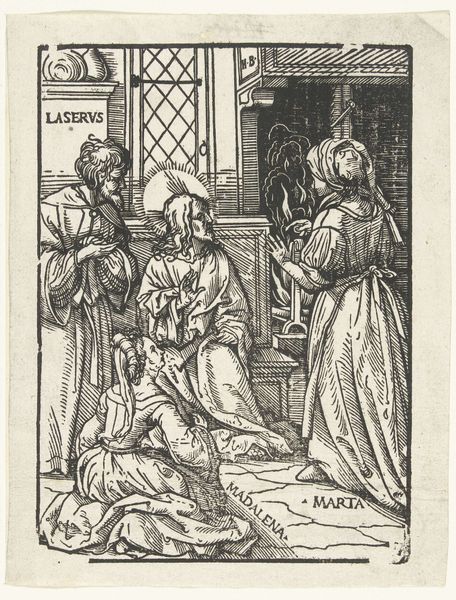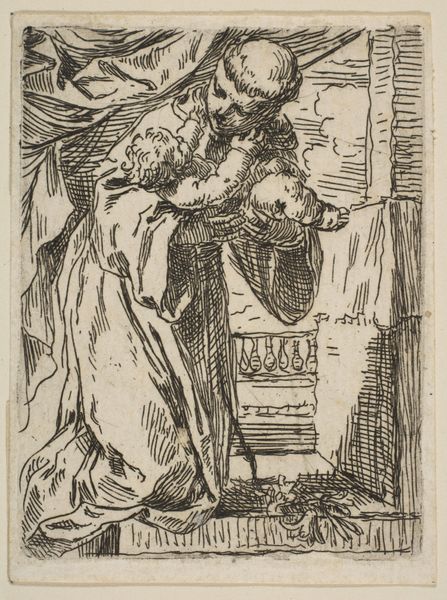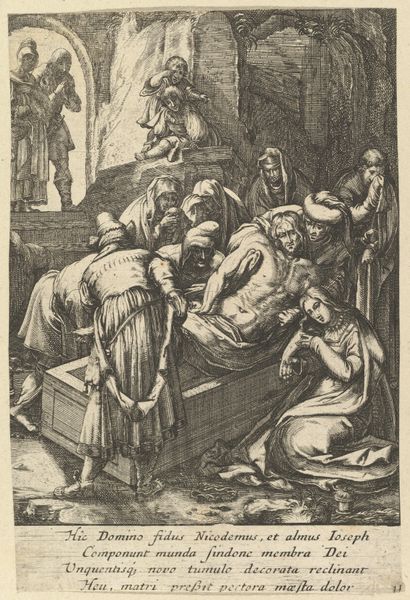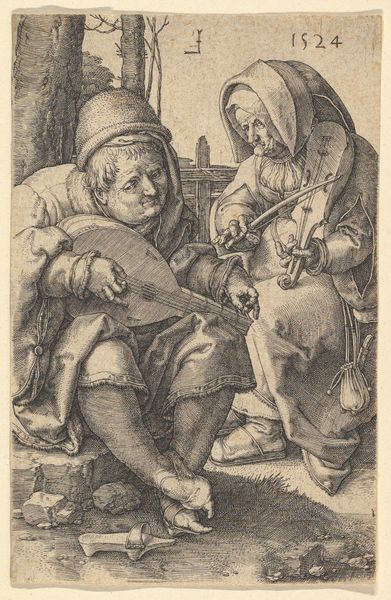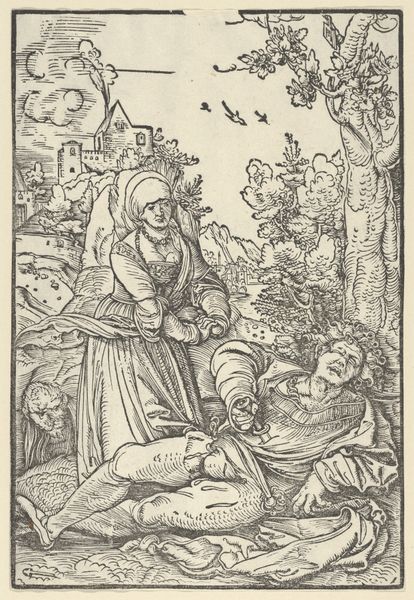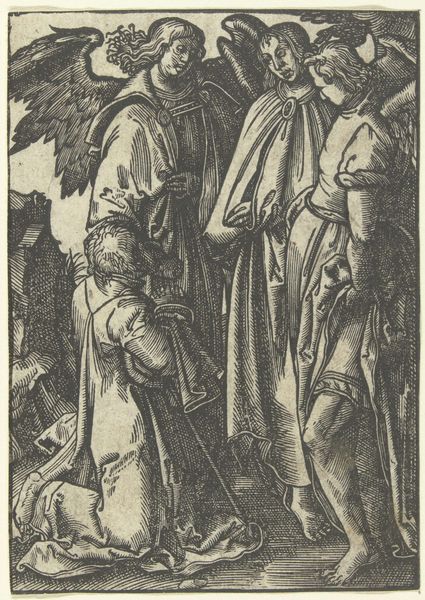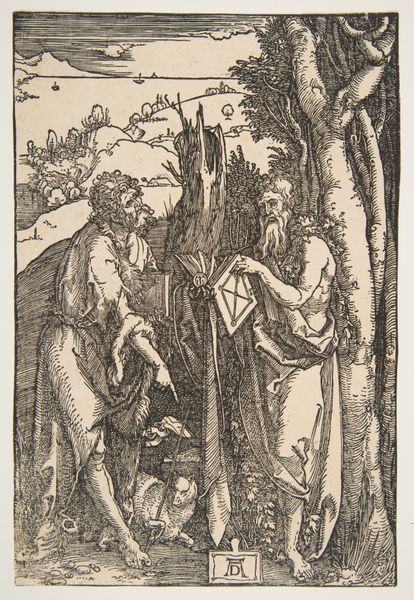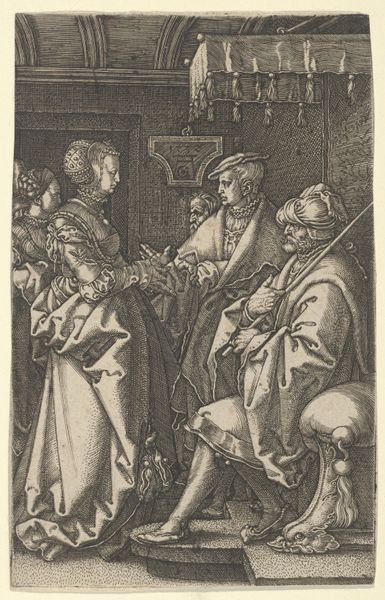
drawing, print, ink
#
drawing
#
ink drawing
#
baroque
#
pen drawing
# print
#
figuration
#
ink
#
history-painting
Dimensions: height 193 mm, width 135 mm
Copyright: Rijks Museum: Open Domain
Moyses van Wtenbrouck created this print, *Geboorte van Christus*, sometime in the first half of the 17th century. Look closely, and you’ll see that it is an etching. This means the artist coated a metal plate with wax, drew the image with a sharp needle to expose the metal, and then bathed the plate in acid. The longer the acid bath, the deeper the lines—and the darker they would appear when printed. The linear quality of etching lends itself to detail. Wtenbrouck uses it here to create a sense of depth, and to describe textures, such as the rough wooden shelter and the donkey's fur. The act of reproducing images through printmaking was revolutionary at the time. It made art more accessible, breaking down traditional hierarchies between unique artworks and those made for mass consumption. This print makes one think about the labour involved: from the artisan drawing the initial sketch on the plate, to the printing process, to its wider circulation and accessibility. Printmaking opened art up to a broader audience, and changed its cultural and economic value forever.
Comments
No comments
Be the first to comment and join the conversation on the ultimate creative platform.
